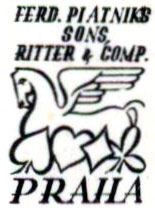Czechoslovakia
The Republic of Czechoslovakia was founded in 1918 from the former Austro-Hungarian empire.
Playing Cards from Czechoslovakia
The Republic of Czechoslovakia was founded in 1918 from the former Austro-Hungarian empire. Before this the Czech lands were provinces of Austria and followed much the same course as Germany, but during the 19th century Czech language, culture and national identity were revived and several packs of playing cards were published reflecting Czech national culture. After independence was achieved the tradition of German-suited cards continued, including Hungarian-style ‘Seasons’ cards where the knaves represent medieval central European heroes, the ‘Prague’ or ‘Bohemian’ pattern as well as French-suited cards and tarot (Tarock). Either side of the borders between Czechoslovakia and Austria cards tended to be similar and Bohemian playing cards were often manufactured in Vienna.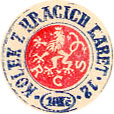
The old Italian suited Trappola cards, which flourished in Czechoslovakia from 18th to mid-20th centuries, were known as Spady cards. Czechoslovakia introduced its own playing card tax regime: the tax stamp had a Bohemian Lion in the centre with the inscription "KOLEK Z HRACICH KARET" printed in blue around the edge.
Czech Nationalistic Playing Cards, 1895
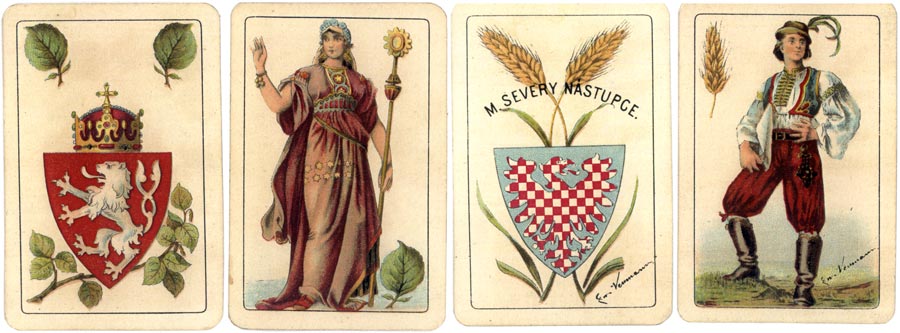
Above: Czech Nationalistic playing cards designed by Emanuel Neumann, c.1895 more →
Czech ‘Hussite’ Pack, 1895
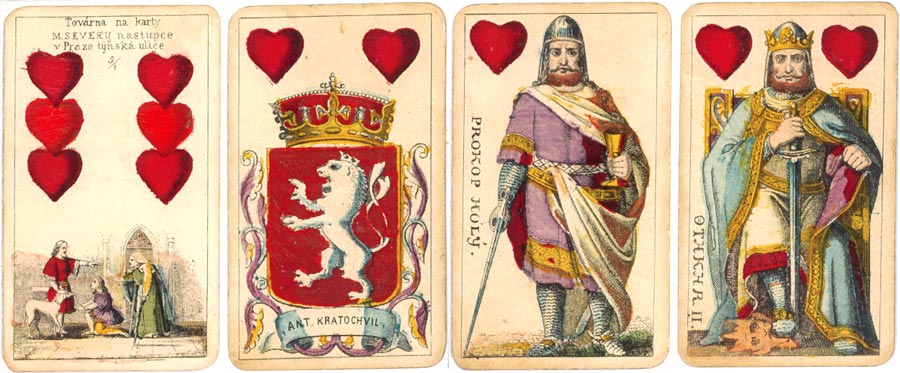
Above: Czech “Hussite” pack engraved by Karel Hoffmann and first printed by Jan Ritter in 1895 more →
Prague 1908 Jubilee
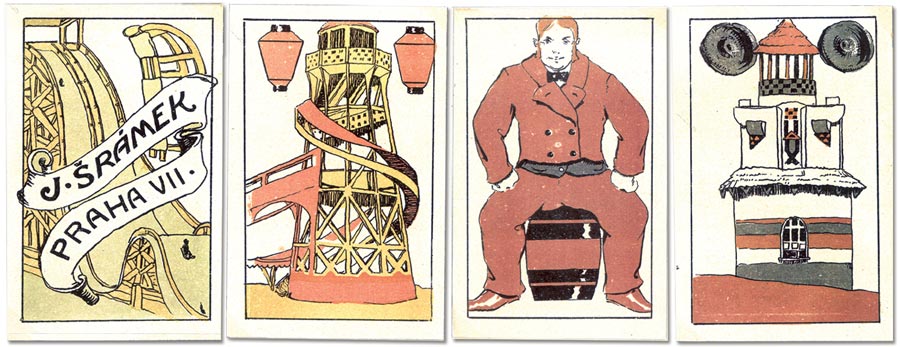
Above: Prague 1908 Jubilee playing cards more →
‘Jugendstil’ designed by Artuš Scheiner, 1920
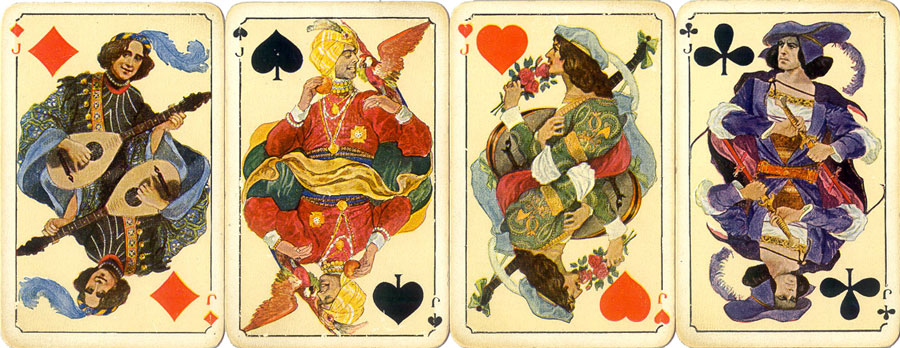
Above: ‘Jugendstil’ designed by Artuš Scheiner, 1920 more →
Ritter & Cie
Jan Ritter & Cie of Prague was acquired by Piatnik, who subsequently opened a branch in Prague (1923-45) and which later became Obchodní Tiskárny. Other manufacturers include Jan Šrámek and Česká Grafická Unie AS.
Čierny Peter
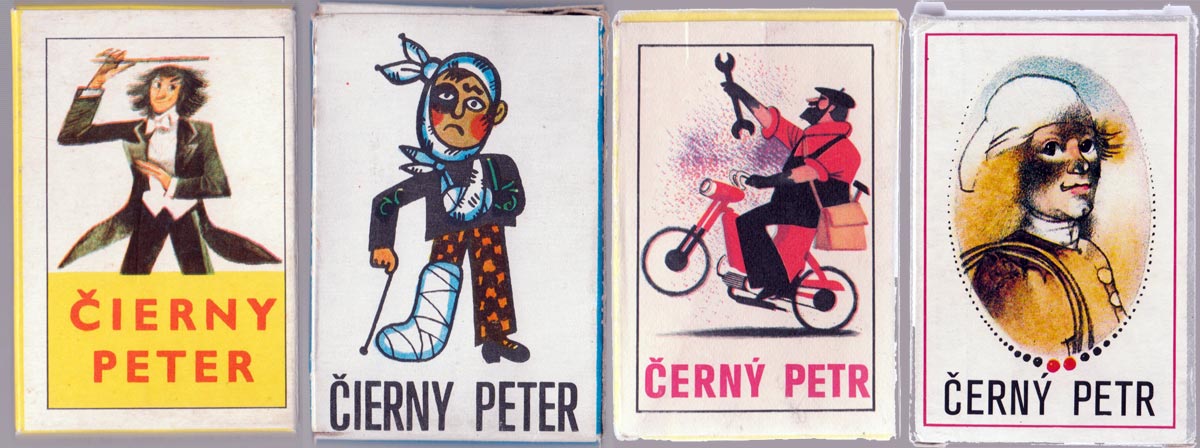
Above: Čierny Peter card games manufactured by Obchodní Tiskárny.
Czech Bohemian playing cards
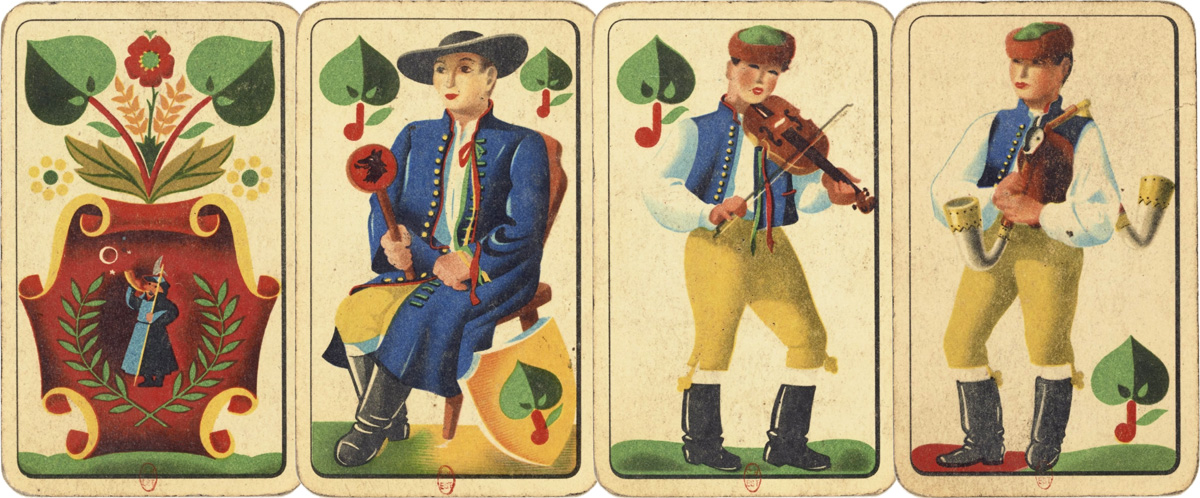
Above: Czech Bohemian playing cards manufactured by Obchodní Tiskárny.
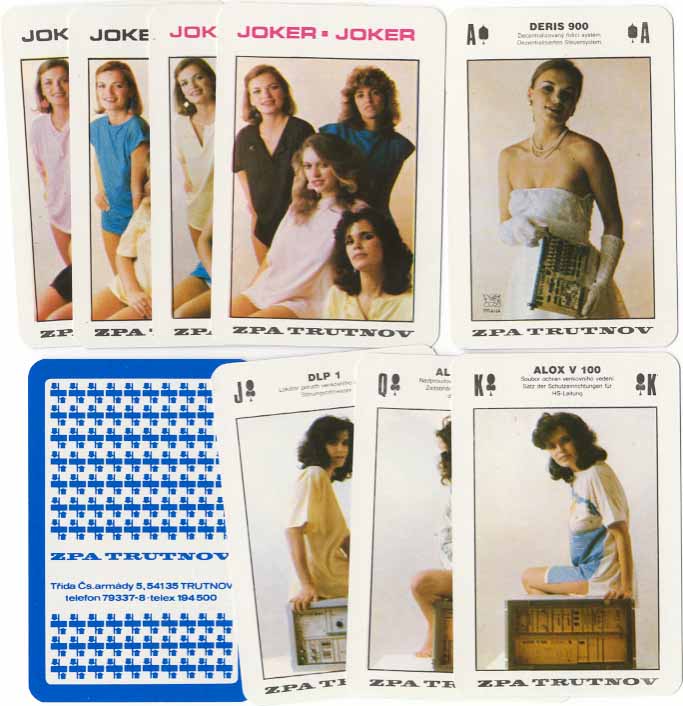
Above: special pack manufactured by Obchodní Tiskárny for ZPA Trutnov electronics, 1988.
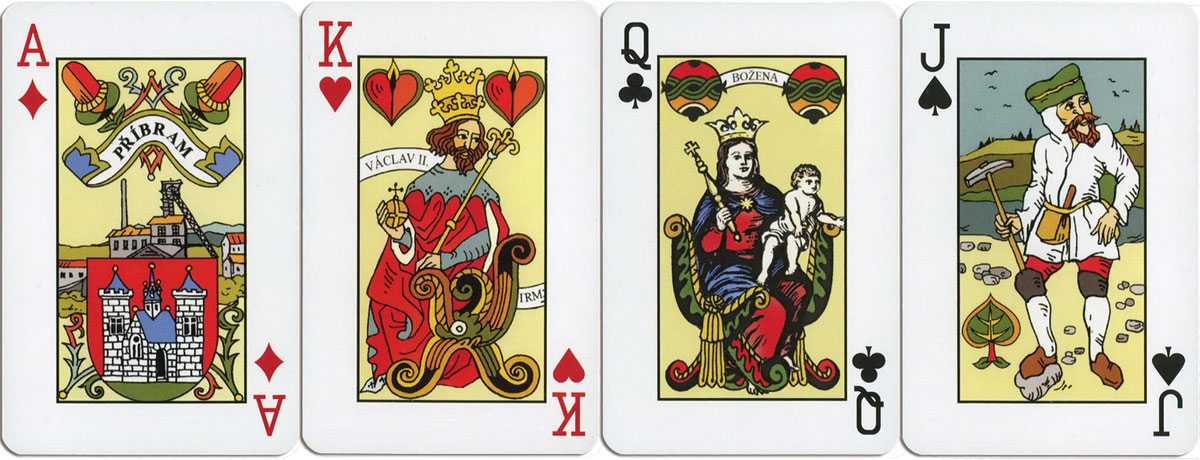
Above: mining-themed deck for Rutek Alliance, 2012.
See also: ‘Historic Ships’ • ‘Detektiv Fuk’ and ‘Dudák’ card games.
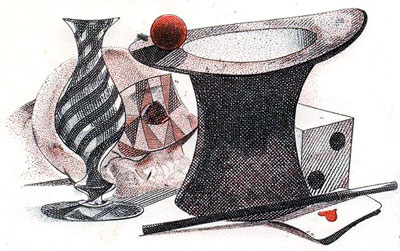
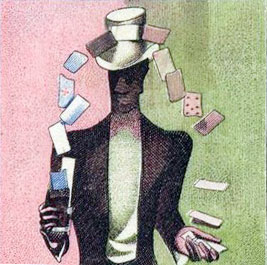
Above: Czech postage stamp design incorporating playing cards by František Tichý (1896-1961).
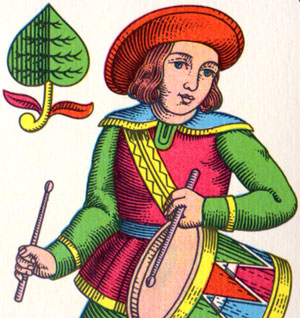
Above: the Bohemian pattern which has roots in the 16th century.
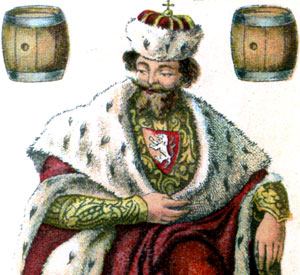
Above: Czech Nationalistic Playing Cards, 1895.
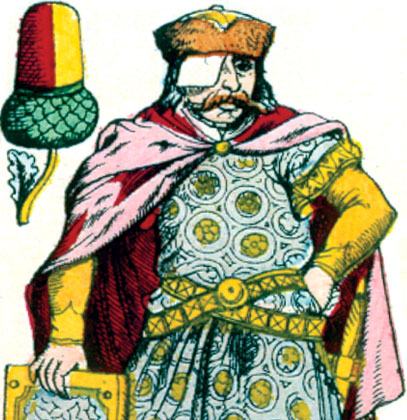
Above: Czech “Hussite” pack engraved by Karel Hoffmann and first printed by Jan Ritter in 1895.
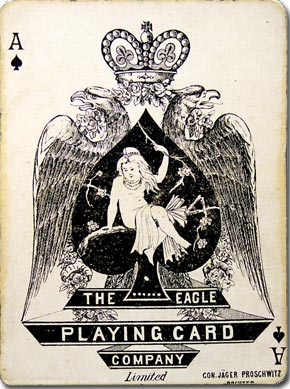
Above: Ace of Spades by the Eagle Playing Card Company Limited (Conrad Jäger, Proschwitz), Czechoslovakia, c.1900.
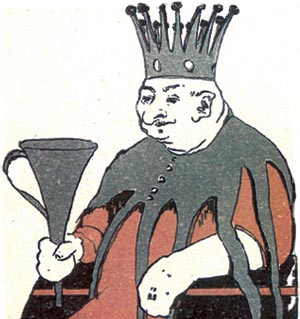
Above: Prague 1908 Jubilee pack manufactured by Jan Šrámek.
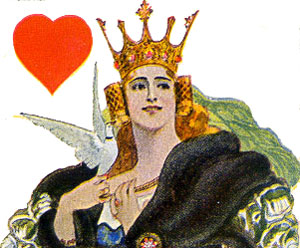
Above: ‘Jugendstil’ designed by Artuš Scheiner, printed by Česká Grafická Unie AS, 1920.
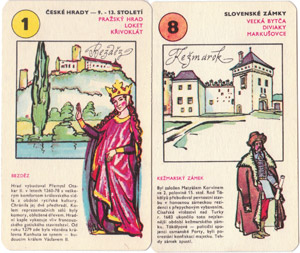
Above: ‘Castles Quartet’ designed by by Vladimir Kovářík.
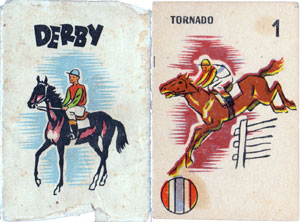
Above: ‘Derby’ card game.
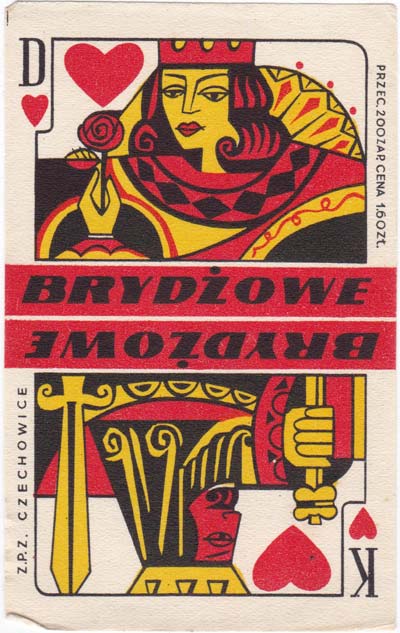
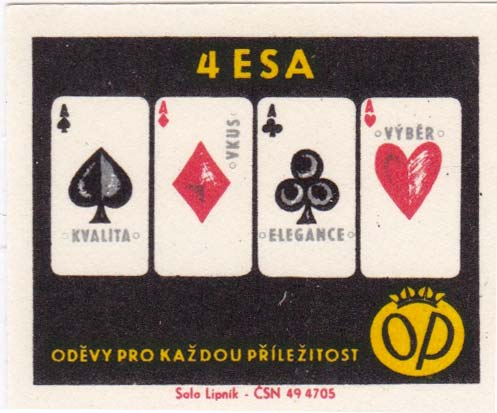
Above: Czech Matchbox labels.
During the 1950s and 1960s cards by Obchodni Tiskarny of Prague were imported into England with the brand name “Casino”, often with charming designs.
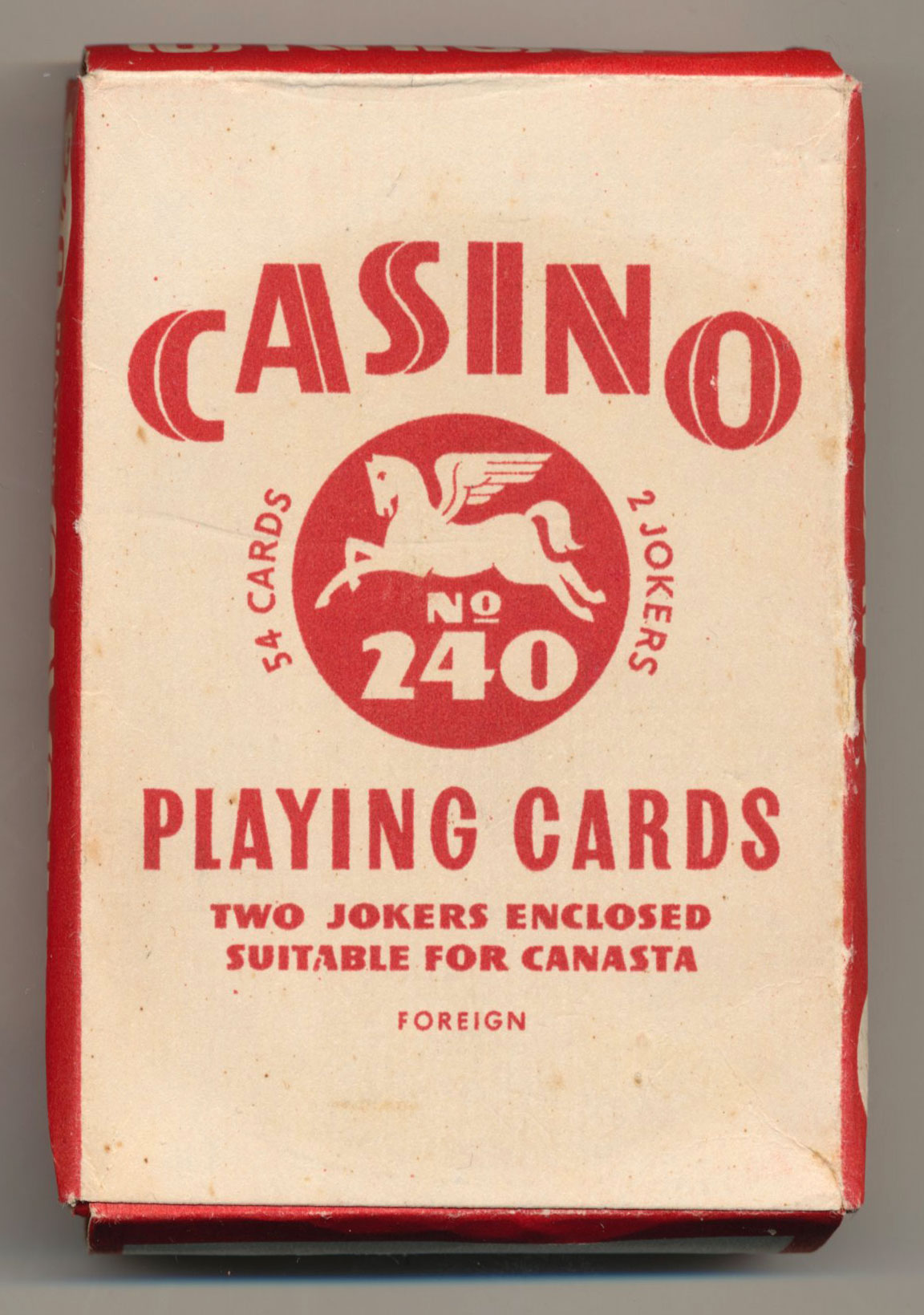
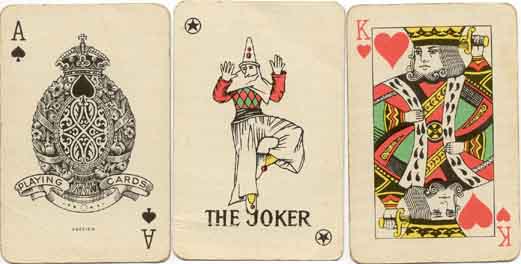
Above: No.240 'Casino' playing cards manufactured by Obchodní Tiskárny, 1955, in UK importation duty wrapper. The Pegasus motif was inherited from Ritter & Cie, Prague. See also: Casino Patience No.140→
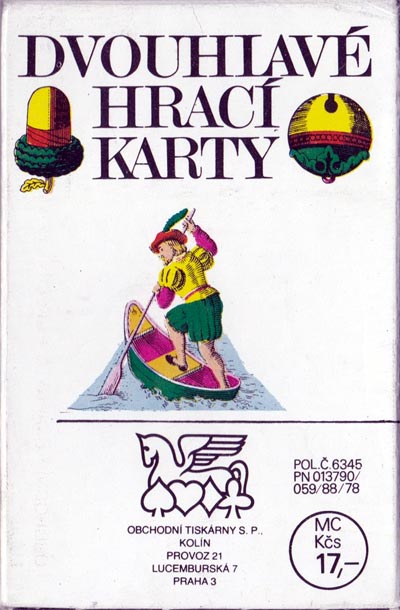
Above: “Dvouhlavé Hrací Karty” (Czech Seasons playing cards) made by Obchodní Tiskárny, c.1980

By Simon Wintle
Member since February 01, 1996
I am the founder of The World of Playing Cards (est. 1996), a website dedicated to the history, artistry and cultural significance of playing cards and tarot. Over the years I have researched various areas of the subject, acquired and traded collections and contributed as a committee member of the IPCS and graphics editor of The Playing-Card journal. Having lived in Chile, England, Wales, and now Spain, these experiences have shaped my work and passion for playing cards. Amongst my achievements is producing a limited-edition replica of a 17th-century English pack using woodblocks and stencils—a labour of love. Today, the World of Playing Cards is a global collaborative project, with my son Adam serving as the technical driving force behind its development. His innovative efforts have helped shape the site into the thriving hub it is today. You are warmly invited to become a contributor and share your enthusiasm.
Related Articles

Czech National Patterns by S.D. Modiano
Modiano produced cards with the Prague and Trappola patterns in the early 20th century.

Doppel-Deutsche Karten by Bratří Willnerové, Teplice
This deck from local manufacturer Bratří Willnerová offers a standard version of the popular Central...

Prager Pattern by Bratří Willnerové, Teplice
Traditional single-ended Prager pattern by Willner Brothers from northern Bohemia.

Animal Skat, Česká Grafická Unie
A non-standard deck from Czechoslovakia.

Czech Bohemian style playing cards
Czech Bohemian style playing cards with a charming aesthetic, reflecting the cultural and social lif...

ČZ playing cards
Advertising pack for the Czechoslovak motorcycle factory Česká Zbrojovka.

Budweiser Budvar beer
Colourful designs promoting Budweiser Budvar beer from Czechoslovakia.

ZPA Trutnov
Publicity pack for a Czech company making mains receivers and electrical control units.

Jan Becher playing cards
Publicity pack for Jan Becher, a Czech liqueur company, with modified international courts.

Interhotel playing cards
Interhotel playing cards printed by Obchodni Tiskárny (OTK), Prague, and published by the Interhotel...

150 Years of Czechoslovakian Railways
Czech trains and railwayana from 1839 to 1989, made by Obchodní Tiskárny, Prague, Czechoslovakia.

Georg Kapfler
Antique deck of old Bohemian playing cards of the German type manufactured by Georg Kapfler and date...

Czech Patience Cards
Patience size playing cards published by Obchodni Tiskarny of Prague, under the brand “Casino”, with...

Dudák
Dudák, meaning ‘Piper’, is a traditional Czech card game and this set has been specially illustrated...

Historic Ships
“Historic Ships” quartet game from Czechoslovakia illustrated by Jaromír Vraštil.

Čierny Peter
Four themed ‘Čierny Peter’ card games by Obchodní Tiskărny.
Most Popular
Our top articles from the past 28 days


